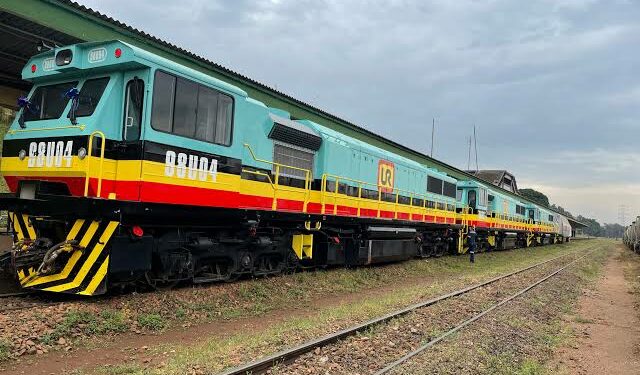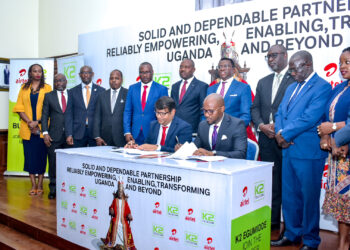In the heart of Uganda, a gigantic transformation is underway as the meticulous overhaul of the meter gauge railway on the Northern Corridor advances into its final stages.
This carefully conceived venture, designed to slash transport costs and elevate trade competitiveness, encounters a formidable challenge in the form of a scarcity of crucial equipment, wagons, and trains.
The venture unfolds with Imathia Construction, a Spanish powerhouse, triumphantly completing the replacement of steel sleepers with resolute concrete beams along the Namanve-Kampala stretch.
Publicist John Lenon Sengendo, the voice of Uganda Railways Corporation (URC), shares that this section is poised for a grand handover this month, paving the way for the commencement of the final leg, Namanve-Mukono.
This triumph follows the successful rejuvenation of the Tororo-Namanve line, an emblem of Uganda’s unwavering dedication to revitalizing its rail infrastructure.
Yet, the glittering promise of reduced transport costs and heightened trade prowess finds itself greeted with skepticism from importers, exporters, and shippers who remain cautious due to a perceived shortfall in rolling stock and operational inefficiencies.
Despite the Malaba-Namanve meter gauge track achieving commendable conditions, a staggering 90 percent of Northern Corridor traffic persists in thundering along the roadways, leaving only a meager seven percent to traverse the rails, hampered by the persistent specter of infrastructure woes.
The financial repercussions of this hesitancy are felt acutely, with transport costs ranging from 20 to 25 cents per tonne per kilometer for roads, while rail, plagued by inadequate infrastructure, oscillates between 6 to 12 US cents.
A critical spotlight shines on Uganda Railways Corporation (URC) as an audit unfurls a mystifying disappearance of 393 wagons, sparking apprehensions of asset value inflation in financial reports.
URC, caught in the crossfire, hurriedly explains the enigma, attributing the stranded wagons in Kenya to the aftermath of a concession termination. Yet, the ongoing repatriation exercise struggles to reclaim a fraction of these elusive assets.
Undeterred by the challenges, Uganda casts its gaze towards a transformative future, pledging to acquire 3,000 horsepower locomotives by 2026 and ambitiously doubling government-owned wagon ferries.
The financial cavalry, led by the African Development Bank, injects a substantial $233.2 million, while the African Development Fund supplements with $100.7 million – both concessional loans aimed at fortifying the railway revival with rolling stock prowess.
URC sets forth an audacious target – the paradigm shift of cargo from road to rail, envisioning an annual six million tonnes traversing the resurrected tracks.
As the meter gauge railway renaissance unfolds, Uganda not only rekindles the Tororo-Gulu route but also erects the Gulu Logistics Hub, a strategic nexus poised to link markets in Congo and South Sudan.
This multifaceted endeavor underscores Uganda’s grand vision for a revamped, interconnected future, where the rhythmic hum of rails resonates with the heartbeat of progress.
Do you have a story in your community or an opinion to share with us: Email us at editorial@watchdoguganda.com













